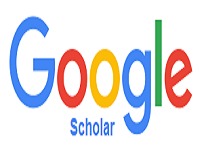Revolutionizing Waste Management: A Cutting-edge pyTorch Model for Waste Classification and Prediction, Coupled with a User-friendly Recycling Recommendation Application Built with Tkinter
Waste management application with tkinter and deep learning
Abstract
A major environmental concern is waste management, and encouraging recycling programs depends heavily on the accurate categorization and forecasting of waste kinds. We present an enhanced pytorch model in this work for waste prediction and classification. To promote sustainable waste disposal practices, we also present a Recycling Recommendation Application with an intuitive Tkinter interface. The goal of combining cutting-edge machine learning methods with user-centered design is to make waste management systems more effective. The model gained accuracy of 99% on training and approximately 96% on validation, and was successfully added in a tkinter app for making prediction on type of waste image, plus recommending of solution to such waste management is done by the application we develop.
Downloads
Copyright (c) 2024 Biplov Paneru, Ramhari Poudyal, Bishwash Paneru, Krishna Bikram Shah, Khem Narayan Poudyal

This work is licensed under a Creative Commons Attribution-ShareAlike 4.0 International License.
Authors who publish with this journal agree to the following terms:
- Authors retain copyright and grant the journal right of first publication with the work simultaneously licensed under a Creative Commons Attribution-ShareAlikel 4.0 International (CC BY-SA 4.0) that allows others to share the work with an acknowledgement of the work's authorship and initial publication in this journal.
- Authors are able to enter into separate, additional contractual arrangements for the non-exclusive distribution of the journal's published version of the work (e.g., post it to an institutional repository or publish it in a book), with an acknowledgement of its initial publication in this journal.
- Authors are permitted and encouraged to post their work online (e.g., in institutional repositories or on their website) prior to and during the submission process, as it can lead to productive exchanges, as well as earlier and greater citation of published work (See The Effect of Open Access).







